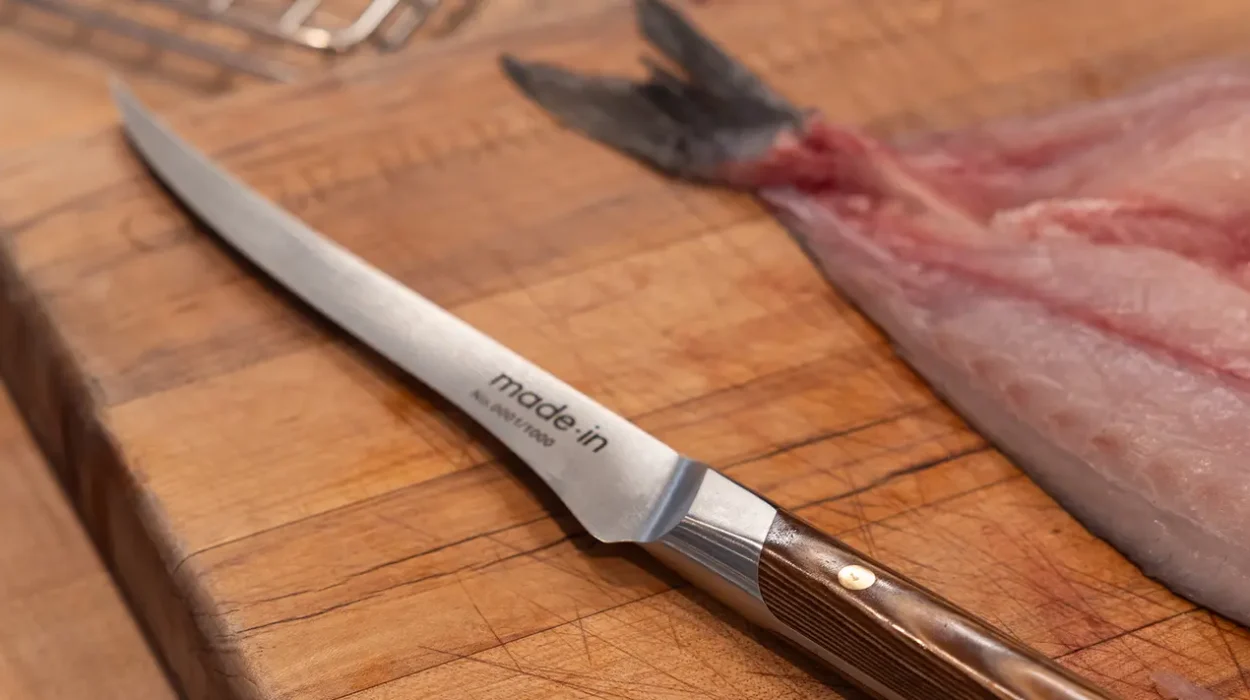Trout is a delicious and versatile fish that many enjoy cooking and eating. However, one of the challenges with trout is removing the bones efficiently. In this guide, we will explore how to debone trout with a boning knife, a skill that every kitchen professional and home cook should master. This skill not only enhances the presentation of the fish but also improves the dining experience by making it easier to eat.

Why Use a Boning Knife?
A boning knife is specifically designed for removing bones from meat and fish. Its thin, sharp blade allows for precise cuts, making it the ideal tool for deboning trout. To learn more about why a stiff boning knife is better, visit this article.
Preparing the Trout
Before you begin, ensure that you have a fresh trout and a clean working space. Gather your tools, including a cutting board, a boning knife, and a pair of kitchen shears. It’s crucial to have everything ready to make the process smooth and efficient.
Cleaning the Fish
Start by rinsing the trout under cold water to remove any debris or scales. Pat it dry with paper towels. This step is essential to ensure a firm grip on the fish during deboning.
Step-by-Step Deboning Process
Step 1: Make the First Cut
Lay the trout on the cutting board with the belly facing you. Use the boning knife to make an incision behind the gills and cut along the backbone toward the tail. Be careful to cut just above the bones.
Step 2: Remove the Rib Bones
Slide the knife under the rib bones, keeping the blade close to the bones to minimize waste. Carefully lift the rib bones away from the flesh. This step requires patience and precision.
Step 3: Cut Away the Backbone
Once the rib bones are removed, continue cutting along the backbone to separate the flesh completely. Use kitchen shears to snip any remaining connections at the tail.
Step 4: Check for Pin Bones
Run your fingers over the flesh to feel for any remaining pin bones. Use tweezers or pliers to remove them. This step ensures that the fillet is bone-free and ready for cooking.
Tips for Using a Boning Knife
Handling a boning knife requires skill and practice. For tips on different boning knife grip styles, check out this helpful resource.
Safety Precautions
When using a sharp knife, safety is paramount. Always cut away from your body and keep your fingers clear of the blade. Ensure your cutting board is stable to prevent accidents.

FAQs
What is the best way to store a boning knife?
Store your boning knife in a knife block or on a magnetic strip to keep the blade sharp and prevent accidents.
Can I use a boning knife for other types of fish?
Yes, a boning knife is versatile and can be used for other types of fish, such as salmon. For more on deboning salmon, visit this guide.
How do I maintain the sharpness of my boning knife?
Regularly sharpen your knife using a honing steel or a sharpening stone. Clean and dry the knife after each use to prevent rust.
For more tips on using and caring for a boning knife, check out this comprehensive guide.
By following these steps and tips, you can master the art of deboning trout with a boning knife, enhancing both your cooking skills and culinary enjoyment.
This article contains affiliate links. We may earn a commission at no extra cost to you.


